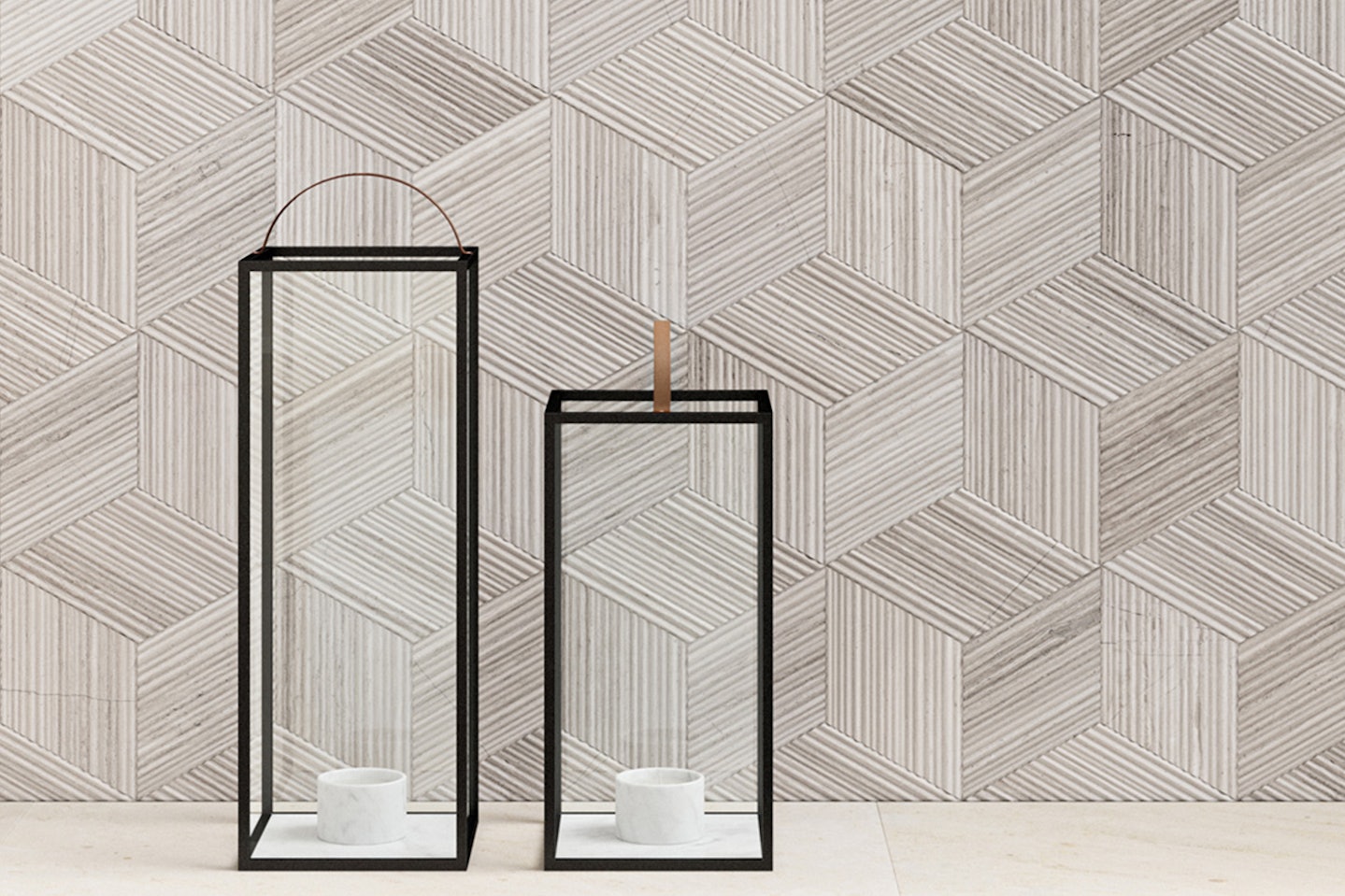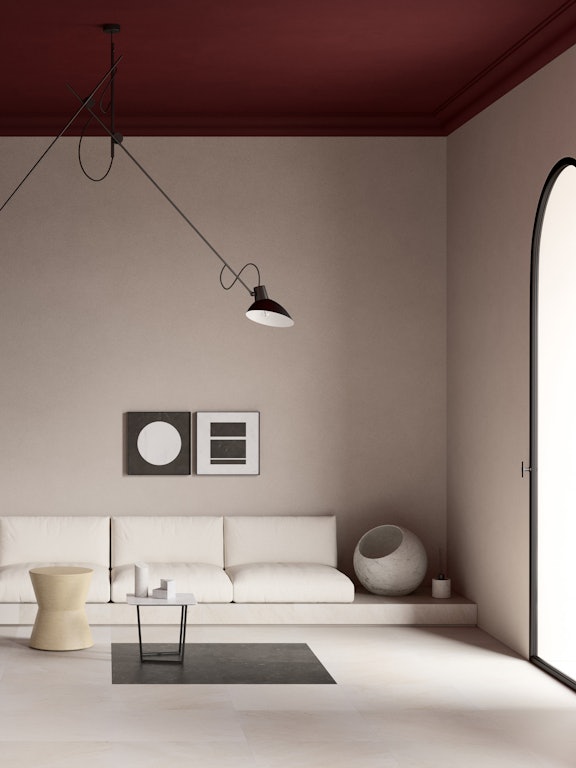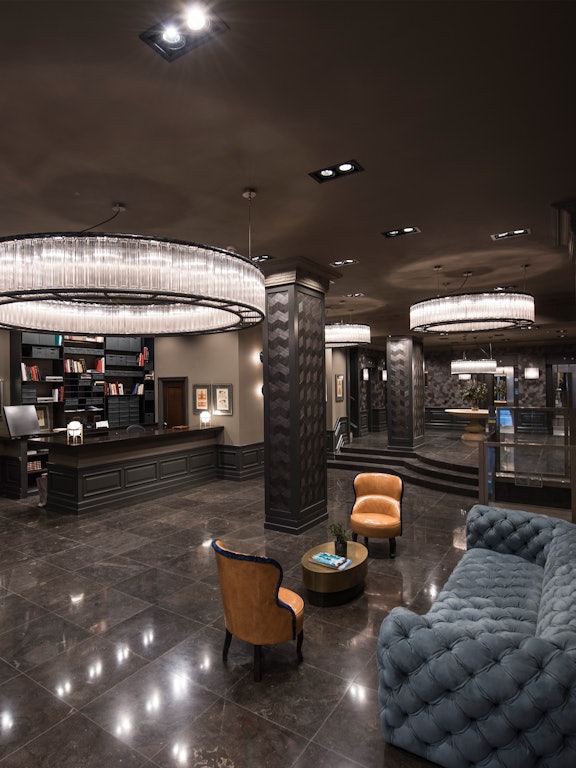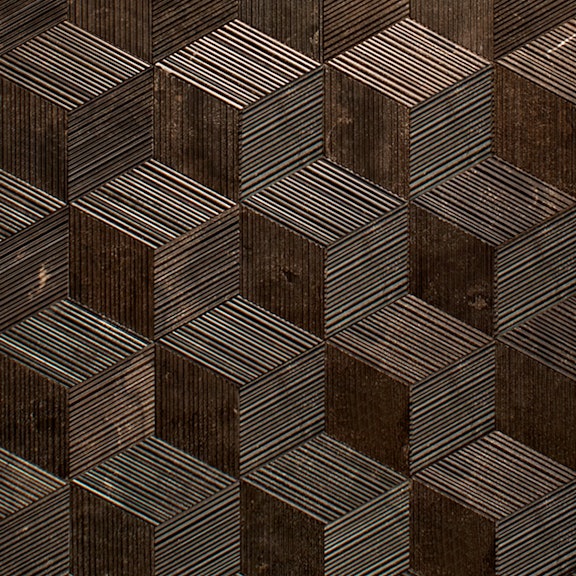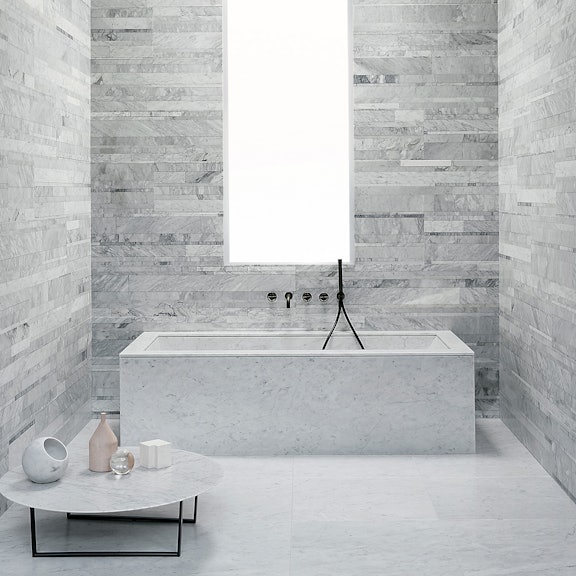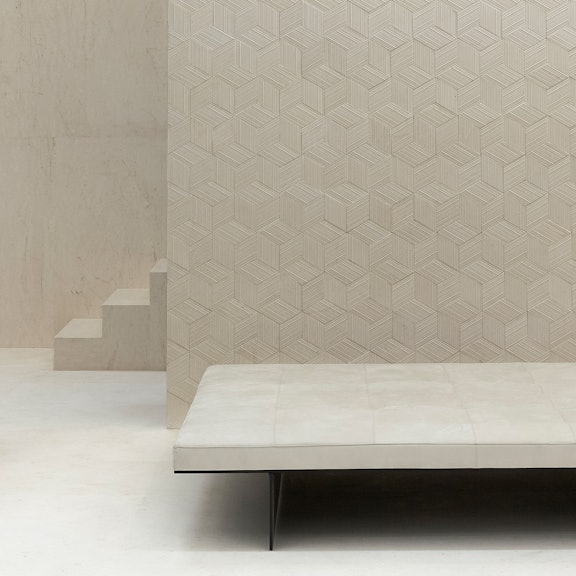The importance of light: Romboo
03.2022
In order for Romboo to show its full beauty, it needs to be placed in the right light. Here's how to make the best use of light for this purpose.
The importance of light: Romboo
Think about it: light gives us everything. Colours, warmth, life. For objects it provides depth, perspectives, even three-dimensional perspectives. It may not be able to distort reality, but light can certainly bring out the full potential of those things it rests upon.
To do this, however, it must be given the opportunity to express itself: light, just like stone, must be treated in the right way. It’s not by chance that people say “seeing everything in a different light” and this is what we want to do with our creations.
So let’s see what Romboo is and how we can use light in the best way possible to enhance marble’s unique geometries.
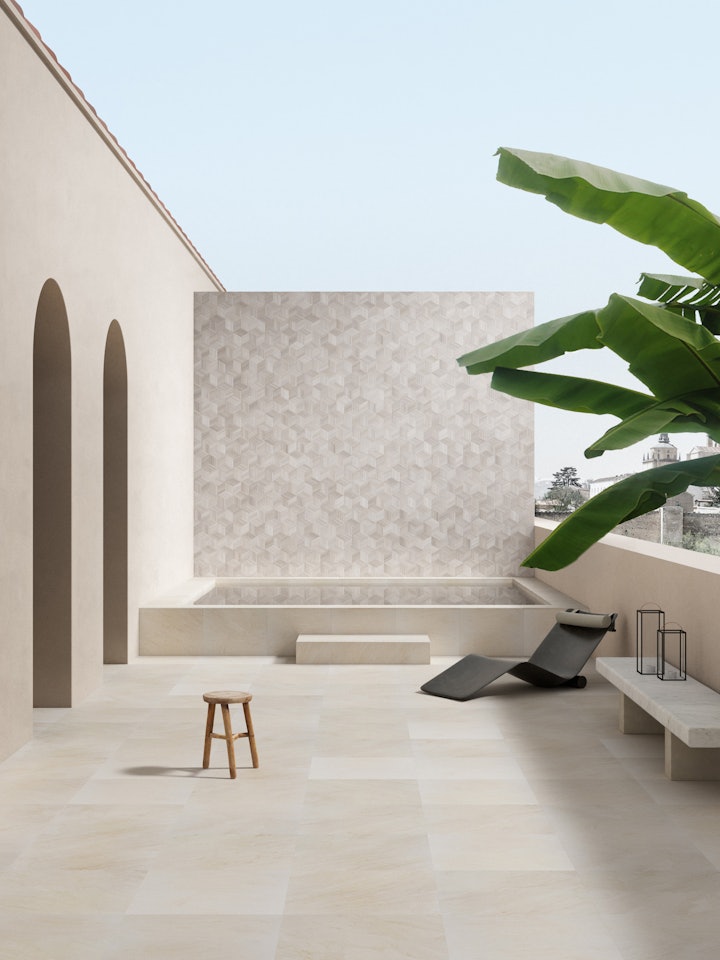
Sustainability and geometry: Romboo
Any company nowadays should feel an ethical responsibility to bring to market creations that are not only aesthetically pleasing, not only functionally efficient, but also fully environmentally friendly. Pollution and climate change are huge problems that we can no longer ignore, but rather must tackle as the main enemy if our green home is to remain healthy and hospitable.
Romboo is a creation of ours that stands at the forefront of defending these ideals, ensuring that there is no waste in a company’s production and that beauty can be 100% green. Its birth is a story within a story, because it comes from another great name of ours: Bamboo. Seeing the large amount of production scraps adding an unnecessary burden onto the total amount of stone needed, we asked if there was any way to breathe new life into that initially discarded material. We were able to come up with something completely original, tiles that no longer looked at the linear and potentially infinite geometry of Bamboo, but rather at a lozenge, a hexagonal pattern that, when in contact with light, gives off extraordinary and memorable visual effects.
A solution that immediately caught the imagination of industry professionals, architects, and creatives: for example, when designer Juan Marchante was asked to re-imagine the Edificio Sota, an incredible example of early 20th-century architecture that recently underwent a major renovation, he decided to incorporate Romboo and other Salvatori creations into the interior design, bestowing a new magnificence to the Spanish building.
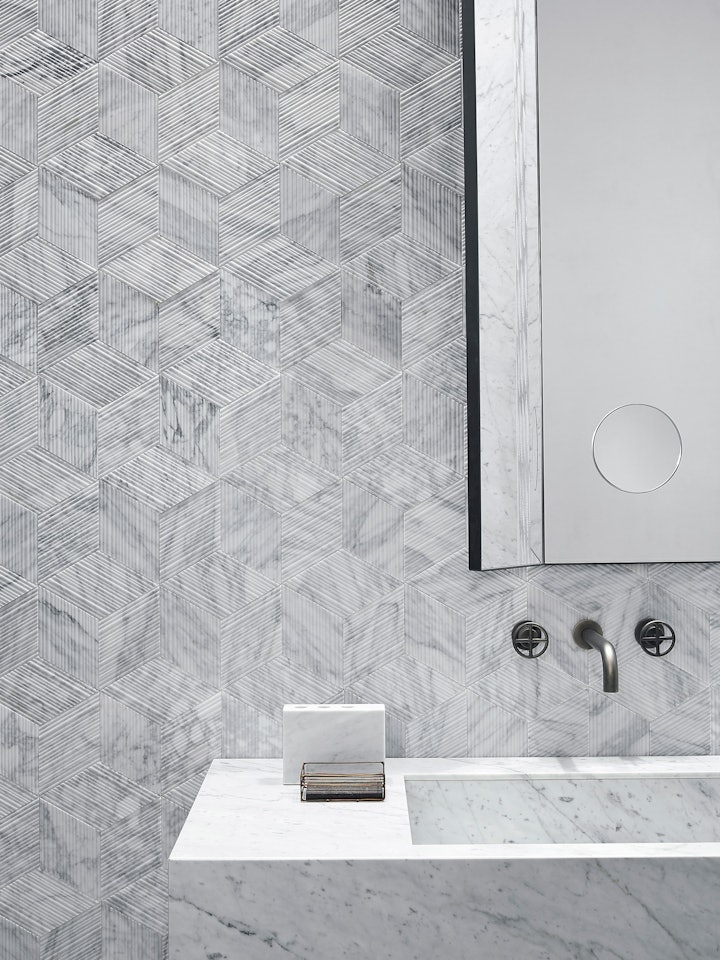
Light according to Romboo
There is no such thing as just one light and, to complicate matters, apparently there is no such thing as the right light regardless. A cross-section of reality can be enhanced or hindered depending on how the lighting is positioned; a light can be right for one reality, but wrong (or at least less than ideal) for another.
A well-considered design cannot therefore disregard this factor: although they are all equally magnificent, our products have their own identities and within these their own unique processes and geometries. Just think about how substantially different Romboo is visually from its “mother” creation Bamboo. So how do we allow the Romboo hexagons to create an explosive symbiosis with the ray of light? There are two possible scenarios to consider: the first, and the ideal one involves the use of adjustable light sources. If you have this option, make sure you place the light about 60 centimetres from the Romboo surface. If however you don’t have this possibility and the scenario requires a fixed light source, we suggest that the light be positioned as close to the surface as possible, ideally at a distance that does not exceed 30 cm.
We have seen how Romboo is a very important creation within the Salvatori family and its philosophy that embraces eco-sustainability, and we have seen how the right light does justice to the creation it “kisses”. If you are interested in more information about this or if you have the curiosity to explore Salvatori products further, contact us and we will give you all the answers you are looking for.
